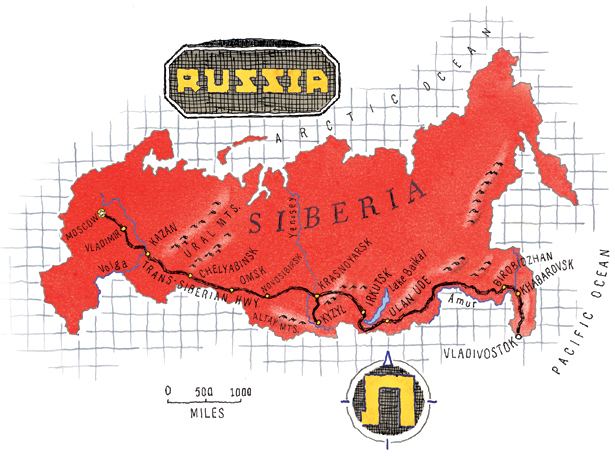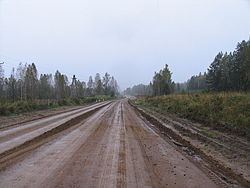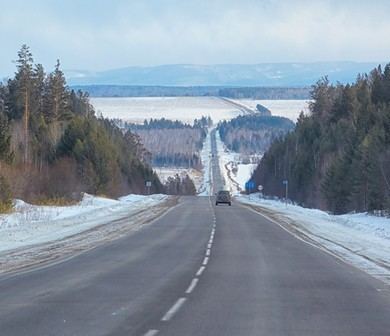Trans siberian highway in russia
The Trans-Siberian Highway is the unofficial name for a network of federal highways that span the width of Russia from the Baltic Sea of the Atlantic Ocean to the Sea of Japan of the Pacific Ocean. In the Asian Highway Network, the route is known as AH6. It stretches over 11,000 kilometres (6,800 mi) from St. Petersburg to Vladivostok. The road disputes the title of the longest national highway in the world with the Australia's Highway 1.
Contents

Route
The route, in places coinciding with European route E30 and passing through the country of Kazakhstan across a distance of about 190 kilometres (120 mi), consists of seven federal highways:

Amur Highway

The most problematic stretch of the highway lay between Chita and Khabarovsk. The first section of this route, linking Belogorsk to Blagoveshchensk (124 km in length), was constructed by gulag inmates as early as 1949. Extended and updated between 1998 and 2001, this road forms part of the Asian route AH31 connecting Belogorsk to Dalian in China.

The Chita-Khabarovsk road remained largely unfinished up until early 2004, when Russian President Vladimir Putin symbolically opened the Amur Highway, with great swaths of forest separating major portions from one another. Jim Oliver and Dennis O'Neil rode motorbikes across Russia, along the Trans-Siberian Highway, during the last week of May and the first three weeks of June in 2004:back then, as described in Jim Oliver's book, Lucille and The XXX Road, the section between Chita and Khabarovsk was an extremely challenging undertaking among marsh, gravel, rock, mud (vulnerable to the rasputitsa seasons), sand, washboard, potholes, stream fording and detours of the elusive highway with a noticeable absence of pavement which leads into cases of probable surface tension which can cause the highway to collapse. In the following years the road, in some places was a modern paved highway with painted reflective lane-lines, while in others a single lane meandering, pockmarked, loose-gravel trail following the route of the early 20th century Amur Cart Road. Completion of a 7-metre-wide highway between Chita and Khabarovsk was slated for 2010: now the road is in very good condition, completely upgraded and enlarged and with a smooth surface. Asphalt paving of the highway is expected to continue until 2016.
Old history

The road from St. Peterburg to Irkutsk existed already before the railway era. It was featured in the novel Michael Strogoff: The Courier of the Czar by Jules Verne written in 1876.
Urban legends

The extremely large nature of the project has spawned several legends. For example, an inexplicable semicircle is said to exist somewhere that breaks the straight line of a segment. The explanation would be that when Joseph Stalin used a ruler to mark where the highway should pass the pencil jumped over his finger and the engineers that were under threat to make the segment exactly as commanded did not deviate from the drawing.

The same myth exists about the Moscow-Saint Petersburg Railway, which is very straight but has a strange curve nicknamed "The Tsar's finger". The myth about the road may come from the railway myth.

